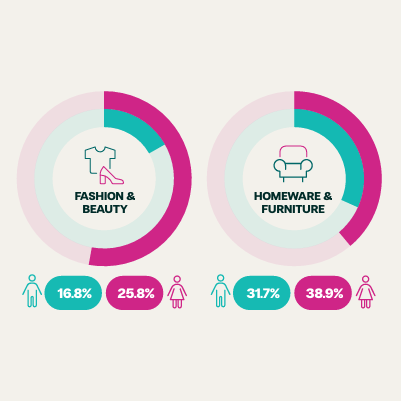Buy Now, Pay Later and Jewellery: The benefits for merchants and lenders

Buy Now, Pay Later (BNPL) and jewellery are a perfect match. Engagement rings and watches are significant yet often necessary investments, which can be challenging to afford without finance.
In this article, we explore the topic of Buy Now, Pay Later and jewellery and let merchants and lenders know what they need to be aware of when providing this type of finance.
Buy Now, Pay Later and Jewellery: How does it work?
With its promise of 0% interest, Buy Now, Pay Later offers an affordable, manageable way to purchase jewellery.
Customers can spread the payments of an engagement ring or watch after an initial deposit, and there are often no fees unless a payment is missed.
Every BNPL transaction is a credit agreement. The lender loans the customer the cost of the good and pays the merchant in full. The customers receives the goods immediately, as usual. The merchant meanwhile pays the lender a transaction fee, somewhere between 2% and 8% (but sometimes as high as 15%).
Is it right to call this type of finance Buy Now, Pay Later for Jewellery?
As jewellery items are almost always high-value, the term ‘Buy Now, Pay Later’ may be a bit misleading. BNPL often refers to low value, short-term repayment plans. If you are shopping for jewellery or watches, you may be more likely to find ‘checkout finance’ or ‘Short-term Interest-free Credit (STIFC)’ offered as a means of payment.
The main difference is that checkout finance providers are regulated financial institutions like banks, whereas BNPL providers are ‘FinTechs’. As such, the loans provided can range from £250 to £30,000 for STIFC with repayment periods up to around 3 years. BNPL purchases are typically under £250 in value and are spread over periods up to 12 months.
There are also retail finance providers who charge an Annual Percentage Rate for jewellery purchases. Repayment periods for this type of credit can reach up to 10 years.
The type of Buy Now, Pay Later – or checkout finance – on offer thus depends on the type of jewellery being sold. Low-value items spread over a short period will use BNPL, whilst high-value items spread over a longer period require STIFC or checkout finance.
BNPL and Jewellery: Customer Benefits
Buy Now, Pay Later and Short-term Interest-free Credit applications for jewellery have very little friction for consumers which makes for a quick, easy, and enjoyable checkout experience.
Both forms of credit reverse the customer’s journey to their purchase. Rather than having to save money to buy an engagement ring, consumers save time by accessing the ring immediately and paying for it over a period. 0% interest ensures that customers are not penalised for making these important purchases as they would be with traditional forms of credit.
BNPL and Jewellery: Customer Disadvantages
Buy Now, Pay Later is currently unregulated. As such, many of the protections afforded to consumers under other forms of credit do not currently extend to this type of credit.
Section 75, for example, of the Consumer Credit Act protects customers who make purchases with credit if things go wrong, but is not available for BNPL purchases. If a customer buys a watch using Buy Now, Pay Later and the product does not arrive or the company goes out of business, the money will be lost.
BNPL payments also do not yet leave a positive mark on one’s credit history despite carrying the same risks as traditional credit products.
Some BNPL providers also have late fees baked into their business models, so consumers must be sure they can afford their purchase when using Buy Now, Pay Later for jewellery.
The market is due to be regulated by the Financial Conduct Authority in mid-2023, at which point these issues should be addressed.
Consumers needing to make jewellery purchases in the meantime should look for providers of Short-term Interest-free Credit that are backed by regulated financial insitutitions. Credit checks come as standard in STIFC, which is considered a much safer choice for consumers.
BNPL and Jewellery: Merchant Benefits
Jewellery merchants that offer Buy Now, Pay Later and Short-term Interest-free Credit benefit from an uptick in sales volume, an increase in conversion rates, and a decrease in cart abandonment.
They’re also powerful customer acquisition tools. Consumers are drawn to retailers that offer Buy Now, Pay Later, with 9.5 million Britons saying they would avoid businesses that do not offer BNPL. This presents a significant competitive advantage for jewellery retailers with Buy Now, Pay Later vs those who do not offer it.
BNPL and Jewellery: Merchant Disadvantages
BNPL can be a fantastic way to support consumers in their jewellery purchase, but it does come at a cost to retailers.
Merchants are charged a fee for each transaction – normally between 2% and 8% depending on the BNPL provider. There are also monthly fees as well as an initial set-up fee, but these vary widely (some providers have been known to pay large retailers to feature at their checkout!).
A challenging macroeconomic environment is putting pressure on the profits of many providers who will be looking to recoup costs. It is likely that some providers will increase their merchant fees to combat this.
Others are diversifying their business offerings and now provide an online marketplace for consumers to find retailers and purchase goods from within.
This is great for consumers, who can use this marketplace to find the best deals. But it’s a race to the bottom for merchants who feature alongside their competitors. Consumers will be drawn to the jewellery company that features the most prominently on this page, which means merchants must compete for co-marketing opportunities.
It is therefore fair to say that some BNPL providers may not have jewellery retailers at the heart of their operations. Rather, these providers are more concerned with their own customer acquisition ambitions.
Merchants must therefore be diligent when choosing a retail finance partner. Featuring the brand of a company that has intentions to raise profits, shift focus, or build a relationship with your customer for their own business goals could cause problems down the road.
BNPL and Jewellery: Lender Benefits
Buy Now, Pay Later presents significant opportunities for jewellery lenders.
At first glance, 0% finance may not appear to be a profitable form of lending. Traditional credit products charge interest, one-off, and monthly fees to consumers to generate revenue. Yet there are no fees to consumers with Buy Now, Pay Later jewellery purchases. Lenders instead charge jewellery merchants for each transaction.
This, however, is not the main advantage of Buy Now, Pay Later and Short-term Interest-free Credit products for lenders. Its most powerful use-case is actually as a customer acquisition tool.
Retail finance gives consumers access to credit who may not have otherwise made an application. Would-be customers stay away from traditional finance to avoid credit card fees or the friction involved in taking out a loan. But Buy Now, Pay Later and Short-term Interest-free Credit are free (unless a payment is missed) and provide very little friction). A new pool of previously underserved customers can therefore be accessed by lenders.
For lenders, a retail finance loan now could mean a mortgage in the future. Offering BNPL for jewellery is thus a fantastic strategy for lenders hoping to grow their customer base.
BNPL and Jewellery: Lender Disadvantages
As with any form of credit, lenders shoulder the risk if customers cannot afford to pay. But Buy Now, Pay Later loans for low-cost jewellery pose a distinct set of challenges for lenders recovering monies owed.
Chasing debts for jewellery worth less than £250 may prove to be a fruitless and frustrating exercise, as the cost of collection is likely to outweigh the value of the item being recovered. This puts lenders in a difficult position, who must be seen to enforce their collections procedures to discourage defaults, despite the non-existing financial reward.
These issues are less pronounced for Short-term Interest-free Credit, which naturally finances more expensive items, like engagement rings and watches. Though the credit risk remains, stringent credit worthiness checks reduce the chances of defaults.
Should you provide Buy Now, Pay Later for Jewellery?
Buy Now, Pay Later (BNPL) is a fantastic way to support customers making jewellery purchases. Merchants and lenders offering this type of finance are rewarded with increased sales and conversion rates, a reduction in cart abandonment, and a powerful customer acquisition tool.
But it’s not without its challenges. There is question over the sustainability of the BNPL model as profits are squeezed, businesses pivot, and priorities change within the market. Recovering monies owed is also expensive and often not worth the hassle for such small purchases.
However, many of the underlying issues with Buy Now, Pay Later and jewellery are due to the low-ticket nature of the items purchased, unproven business models, and the lack of regulation within the market. These issues largely do not exist with Short-term Interest-free Credit products.
Merchants and lenders hoping to provide Buy Now, Pay Later for jewellery should therefore look instead towards Short-term Interest-free Credit, which is more suited to larger purchases. Engagement rings, watches, and investment pieces will all benefit from an uptick in sales as a new pool of customers seek the benefits of Buy Now, Pay Later with the protection from industry regulation.
Keen to know more?








